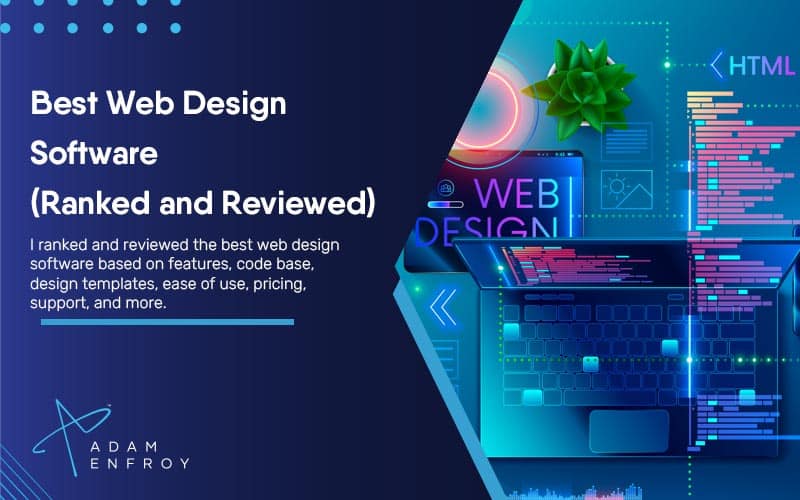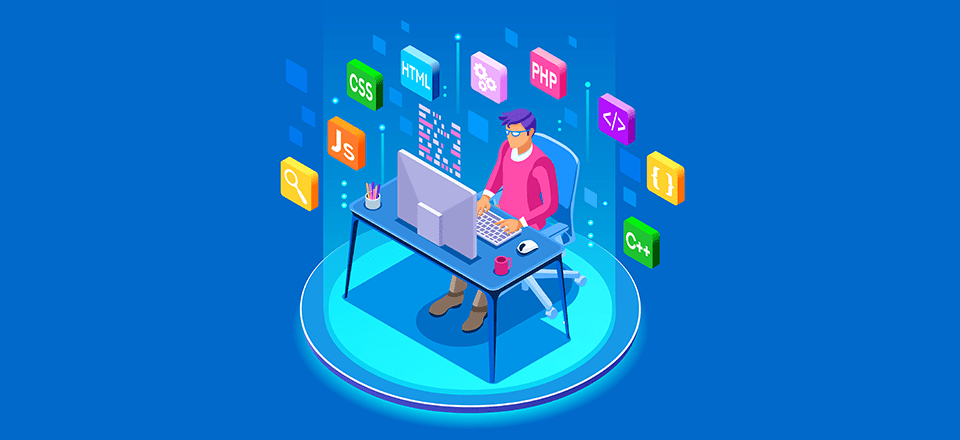All Categories
Featured
Table of Contents
- – Web Design Certificate - Web Development Certi...
- – What Is Web Design? A Comprehensive Guide - W...
- – Webpage Design (Article) - Further Learning -...
- – The Leader In Website Design – Squarespace Ti...
- – Powderkeg: Web Design Madison, Wi Tips and Tr...
- – Custom Website Design And Marketing - Inmotio...
- – 34 Of The Best Website Designs To Inspire Yo...
- – Web Design Services By Freelance Website Des...
- – Design Principles - U.s. Web Design System (...
- – Learning Web Design: A Beginner's Guide To H...
- – Design Principles - U.s. Web Design System (...
Web Design Certificate - Web Development Certificate Program Tips and Tricks:
Quick summary Usability and the utility, not the visual design, determine the success or failure of a website. Considering that the visitor of the page is the only individual who clicks the mouse and therefore decides everything, user-centric design has actually established as a standard method for effective and profit-oriented website design - web design frederick md.
and the utility, not the visual design, figure out the success or failure of a website. Given that the visitor of the page is the only person who clicks the mouse and for that reason chooses everything, user-centric style has actually become a basic approach for effective and profit-oriented website design. If users can't utilize a function, it might as well not exist.
g. where the search box must be placed) as it has already been performed in a number of posts; instead we concentrate on the techniques which, used effectively, can cause more sophisticated design decisions and simplify the process of viewing provided information. Please see that you might be thinking about the usability-related short articles we have actually published before: Concepts Of Excellent Site Design And Reliable Web Design Standards, In order to utilize the principles correctly we first require to understand how users interact with sites, how they believe and what are the fundamental patterns of users' habits.
What Is Web Design? A Comprehensive Guide - Wix.com Tips and Tricks:
Visitors look at each new page, scan a few of the text, and click on the first link that catches their interest or vaguely resembles the thing they're trying to find. In truth, there are big parts of the page they do not even look at. The majority of users browse for something fascinating (or beneficial) and clickable; as quickly as some appealing prospects are found, users click.
If a page offers users with high-quality material, they want to jeopardize the content with advertisements and the design of the site. This is the reason why not-that-well-designed sites with top quality material gain a lot of traffic over years. Material is more essential than the style which supports it.

Users do not read, they scan. Notice how "hot" areas abrupt in the middle of sentences. This is normal for the scanning procedure. Really simple concept: If a website isn't able to meet users' expectations, then designer failed to get his task done correctly and the business loses cash. The greater is the cognitive load and the less instinctive is the navigation, the more ready are users to leave the site and look for alternatives.
Webpage Design (Article) - Further Learning - Khan Academy Tips and Tricks:
Neither do they scan website in a direct fashion, going sequentially from one website area to another one. Instead users satisfice; they pick the first sensible option. As quickly as they discover a link that looks like it may lead to the goal, there is an excellent possibility that it will be right away clicked.
It does not matter to us if we comprehend how things work, as long as we can use them. If your audience is going to act like you're developing billboard, then style excellent signboards." Users wish to be able to control their web browser and rely on the consistent information discussion throughout the site.
If the navigation and site architecture aren't instinctive, the variety of enigma grows and makes it harder for users to understand how the system works and how to receive from point A to point B. A clear structure, moderate visual hints and quickly recognizable links can assist users to discover their path to their objective.
The Leader In Website Design – Squarespace Tips and Tricks:

Because users tend to check out websites according to the "F"-pattern, these three statements would be the very first elements users will see on the page once it is packed. The style itself is easy and instinctive, to understand what the page is about the user needs to browse for the answer.
As soon as you have actually achieved this, you can communicate why the system is useful and how users can benefit from it. Do Not Misuse Users' Perseverance, In every task when you are going to use your visitors some service or tool, attempt to keep your user requirements minimal.
First-time visitors are prepared to, not filling long web types for an account they might never utilize in the future. Let users explore the site and find your services without requiring them into sharing personal information. It's not sensible to force users to get in an e-mail address to test the feature.
Powderkeg: Web Design Madison, Wi Tips and Tricks:
And that's what you desire your users to feel on your web website. The registration can be done in less than 30 seconds as the form has horizontal orientation, the user doesn't even need to scroll the page.
A user registration alone is enough of an obstacle to user navigation to cut down on incoming traffic. Manage To Focus Users' Attention, As websites supply both fixed and vibrant content, some elements of the user interface bring in attention more than others do.
Focusing users' attention to particular areas of the website with a moderate usage of visual components can help your visitors to obtain from point A to point B without thinking about how it actually is expected to be done. The less concern marks visitors have, the they have and the more trust they can develop towards the company the website represents.
Custom Website Design And Marketing - Inmotion Hosting Tips and Tricks:
4. Make Every Effort For Function Direct exposure, Modern web designs are usually slammed due to their approach of guiding users with aesthetically appealing 1-2-3-done-steps, big buttons with visual effects and so on. From the design perspective these components really aren't a bad thing. On the contrary, such as they lead the visitors through the website material in a really easy and user-friendly way.
The site has 9 primary navigation alternatives which show up at the first glance. The choice of colors might be too light, though. is a basic principle of successful interface style. It doesn't really matter how this is attained. What matters is that the material is well-understood and visitors feel comfy with the method they communicate with the system.
com gets directly to the point. No cute words, no exaggerated statements. Instead a rate: just what visitors are trying to find. An optimum solution for effective writing is touse brief and concise expressions (come to the point as quickly as possible), usage scannable design (classify the material, use multiple heading levels, use visual aspects and bulleted lists which break the circulation of uniform text blocks), usage plain and objective language (a promo does not need to seem like advertisement; offer your users some sensible and objective factor why they must utilize your service or remain on your site)6.
34 Of The Best Website Designs To Inspire You In 2022 Tips and Tricks:
Users are hardly ever on a website to delight in the design; moreover, in many cases they are searching for the info despite the design - web design frederick md. Pursue simpleness rather of complexity. From the visitors' point of view, the very best website design is a pure text, with no advertisements or further content obstructs matching precisely the question visitors used or the content they have actually been looking for.
Finch clearly provides the details about the website and offers visitors a choice of options without overcrowding them with unnecessary material. Not only does it help to for the visitors, but it makes it possible to perceive the information provided on the screen.
Complex structures are more difficult to check out, scan, analyze and work with. If you have the choice between separating 2 design sections by a noticeable line or by some whitespace, it's generally much better to utilize the whitespace solution. (Simon's Law): the better you manage to supply users with a sense of visual hierarchy, the much easier your content will be to perceive.
Web Design Services By Freelance Website Designers - Fiverr Tips and Tricks:
The same conventions and rules ought to be applied to all elements.: do the most with the least quantity of cues and visual aspects. Clearness: all parts ought to be designed so their significance is not ambiguous.
Conventions Are Our Friends, Traditional style of site components does not lead to a boring web site. As they lower the discovering curve, the requirement to figure out how things work. For example, it would be an use nightmare if all sites had different visual presentation of RSS-feeds. That's not that various from our regular life where we tend to get used to standard principles of how we arrange information (folders) or do shopping (placement of products).
understand what they're anticipating from a website navigation, text structure, search placement etc. A common example from use sessions is to translate the page in Japanese (assuming your web users do not know Japanese, e. g. with Babelfish) and provide your functionality testers with a job to find something in the page of different language.
Design Principles - U.s. Web Design System (Uswds) Tips and Tricks:
Steve Krug suggests that it's better to, but take benefits of conventions when you don't. 10. Test Early, Test Frequently, This so-called TETO-principle needs to be applied to every website design project as use tests typically offer into significant problems and issues connected to a given layout. Test not far too late, not insufficient and not for the wrong factors.
Some essential points to remember: according to Steve Krug, and screening one user early in the project is better than testing 50 near completion. Accoring to Boehm's first law, errors are most regular throughout requirements and style activities and are the more pricey the later they are eliminated.
That means that you create something, test it, fix it and then test it once again. There may be problems which haven't been discovered during the very first round as users were practically obstructed by other issues.
Learning Web Design: A Beginner's Guide To Html, Css ... Tips and Tricks:

This holds for designers as well. After you've dealt with a website for few weeks, you can't observe it from a fresh viewpoint any longer. You know how it is developed and for that reason you know exactly how it works you have the wisdom independent testers and visitors of your website wouldn't have.
It can be connected to other locations such as graphic design, user experience, and multimedia arts, but is more aptly seen from a technological perspective. It has actually ended up being a large part of individuals's daily lives. It is hard to think of the Web without animated graphics, different styles of typography, background, videos and music.

Throughout 1991 to 1993 the Web was born. Text-only pages might be seen utilizing an easy line-mode internet browser. In 1993 Marc Andreessen and Eric Bina, developed the Mosaic internet browser. At the time there were numerous internet browsers, however most of them were Unix-based and naturally text heavy. There had been no integrated technique to graphic design aspects such as images or sounds.
Design Principles - U.s. Web Design System (Uswds) Tips and Tricks:
The W3C was created in October 1994 to "lead the World Wide Web to its complete capacity by developing typical protocols that promote its advancement and guarantee its interoperability." This prevented any one company from monopolizing a propriety browser and programs language, which might have altered the effect of the World Wide Web as a whole.
As this has actually occurred the technology of the web has likewise moved on. There have actually also been considerable changes in the way individuals use and access the web, and this has actually changed how sites are created. Because the end of the internet browsers wars [] new web browsers have actually been launched. A lot of these are open source implying that they tend to have quicker advancement and are more helpful of brand-new standards.
Learn more about Lovell Media Group LLC or TrainACETable of Contents
- – Web Design Certificate - Web Development Certi...
- – What Is Web Design? A Comprehensive Guide - W...
- – Webpage Design (Article) - Further Learning -...
- – The Leader In Website Design – Squarespace Ti...
- – Powderkeg: Web Design Madison, Wi Tips and Tr...
- – Custom Website Design And Marketing - Inmotio...
- – 34 Of The Best Website Designs To Inspire Yo...
- – Web Design Services By Freelance Website Des...
- – Design Principles - U.s. Web Design System (...
- – Learning Web Design: A Beginner's Guide To H...
- – Design Principles - U.s. Web Design System (...
Latest Posts
Web Design Online Course:
Webpage Design (Article) - Further Learning - Khan Academy Tips and Tricks:
The Leader In Website Design – Squarespace Tips and Tricks:
More
Latest Posts
Web Design Online Course:
Webpage Design (Article) - Further Learning - Khan Academy Tips and Tricks:
The Leader In Website Design – Squarespace Tips and Tricks: